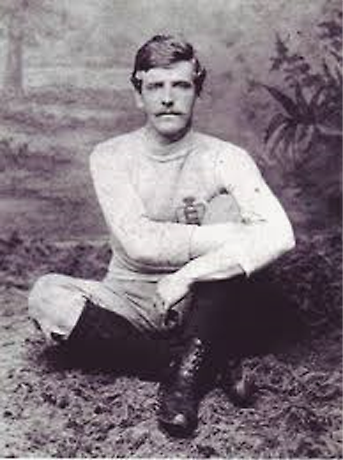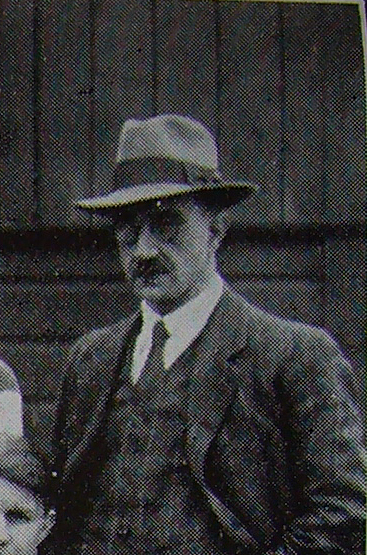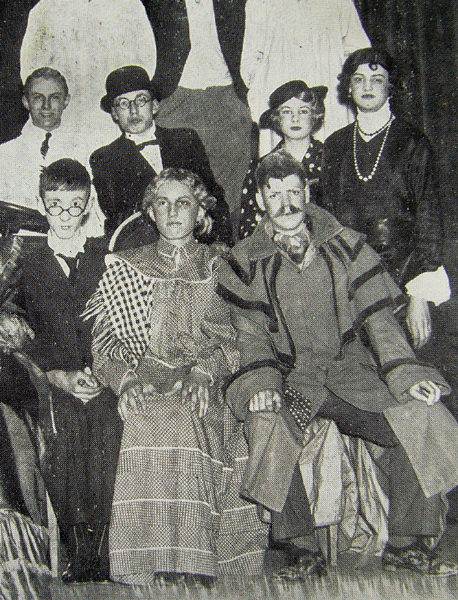The High School plays rugby nowadays. Before this, they used to play football, (or soccer) and were very, very successful. They provided nine England players, who were Frank Ernest Burton, Arthur William Cursham, Henry Alfred Cursham, John Auger Dixon, Arthur Cooper Goodyer, John Edward Leighton, Tinsley Lindley, Harold Morse and Frederick William Chapman who was an Amateur international. Many of these Victorian superstars are now long forgotten. Who would recognise Arthur Goodyer if he walked in through the High School’s front gate?
Three of these men captained England. One was Arthur William Cursham who captained his country on two occasions, namely against Scotland in 1878, when he scored a goal, and against Wales in 1879. His second goal for his country came against Wales in 1883.
The most famous captain of the three was Tinsley Lindley, the man who had a career total of fifteen goals in thirteen appearances for his country. He also held an England scoring record of having scored in nine consecutive games between March 1886 and April 1889. This record was eventually beaten by Ian Wright of Arsenal, more than a century later.
The High School also provided the highest scorer in the history of the FA Cup, Harry Cursham:
The High School also gave us Frederick William Chapman, who appeared in the Great Britain team which competed in the Olympic Football Tournament in 1908. Great Britain won the final 2-0 against Denmark, and Chapman scored the opening goal. Always called simply “Fred”, he is the only Old Nottinghamian ever to win an Olympic gold medal, and, given the limited number of countries who were playing football at this time, he had good reason to consider himself a champion of the world. Chapman went on to play for the England amateur team on twenty occasions, captaining them at least once, thereby becoming the third captain of England to be provided by the High School.
Here is a picture of the Nottingham High School 1st XI in 1897. Frederick William Chapman, the winner of an Olympic Gold Medal, stands at the right hand end of the back row. A determined detective could make a code out of the bricks in the wall behind the team, and discover where the picture was taken. A large clue is that the team were standing in the modern Dining Room, at the end opposite the area where the meals are served:
And here are his international caps:
The High School switched to rugby after Christmas 1914. Ironically, this was shortly after football was seen to be an amazing peace maker during the First World War with the Christmas Truce which brought much of the Western Front to a temporary stop for a few days. Even so, it was well worth it, insofar as British casualties were running at the time at an average of 4,000 men a day killed or wounded:
The two prime movers in the High School’s change to rugby were Mr Leggett of the Preparatory School and Mr Lloyd Morgan. When they volunteered to go to the war, Mr Kennard took over. He had captained the Lancashire XV and played for the North of England in an England trial. Here is Joseph Kennard with four of the First XV in 1929:
Mr Kennard could be a hard man sometimes, and occasionally he could justifiably be described as rather strange.
Around 1935 he was living at 58 Ebers Road in Mapperley, a small semi-detached house. By 1936, he had moved to No 41, a very much larger detached house with a larger garden. For some reason he was violently opposed to the Salvation Army and continually expressed his disgust that they would come and play outside his house in Ebers Road on a Sunday morning. By now he was seen as, in the words of Geoffrey Tompkin, as “exceedingly fierce with a bald head, a black military moustache and spectacles”.
We’ll have a more detailed look at the reasons why the change from football to rugby was made next time.






















































